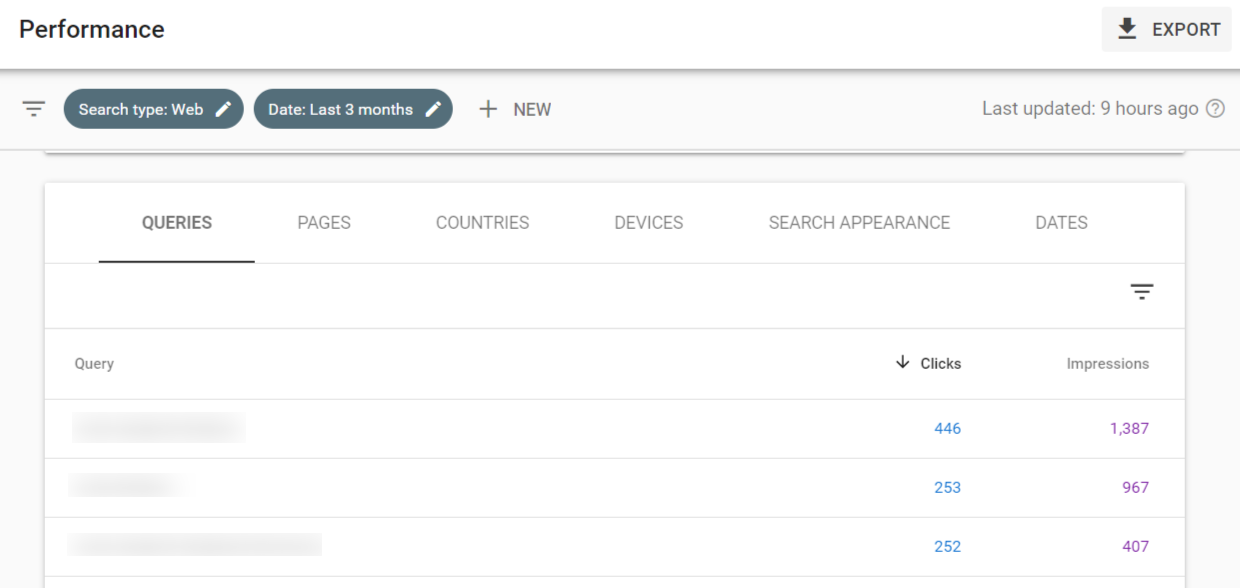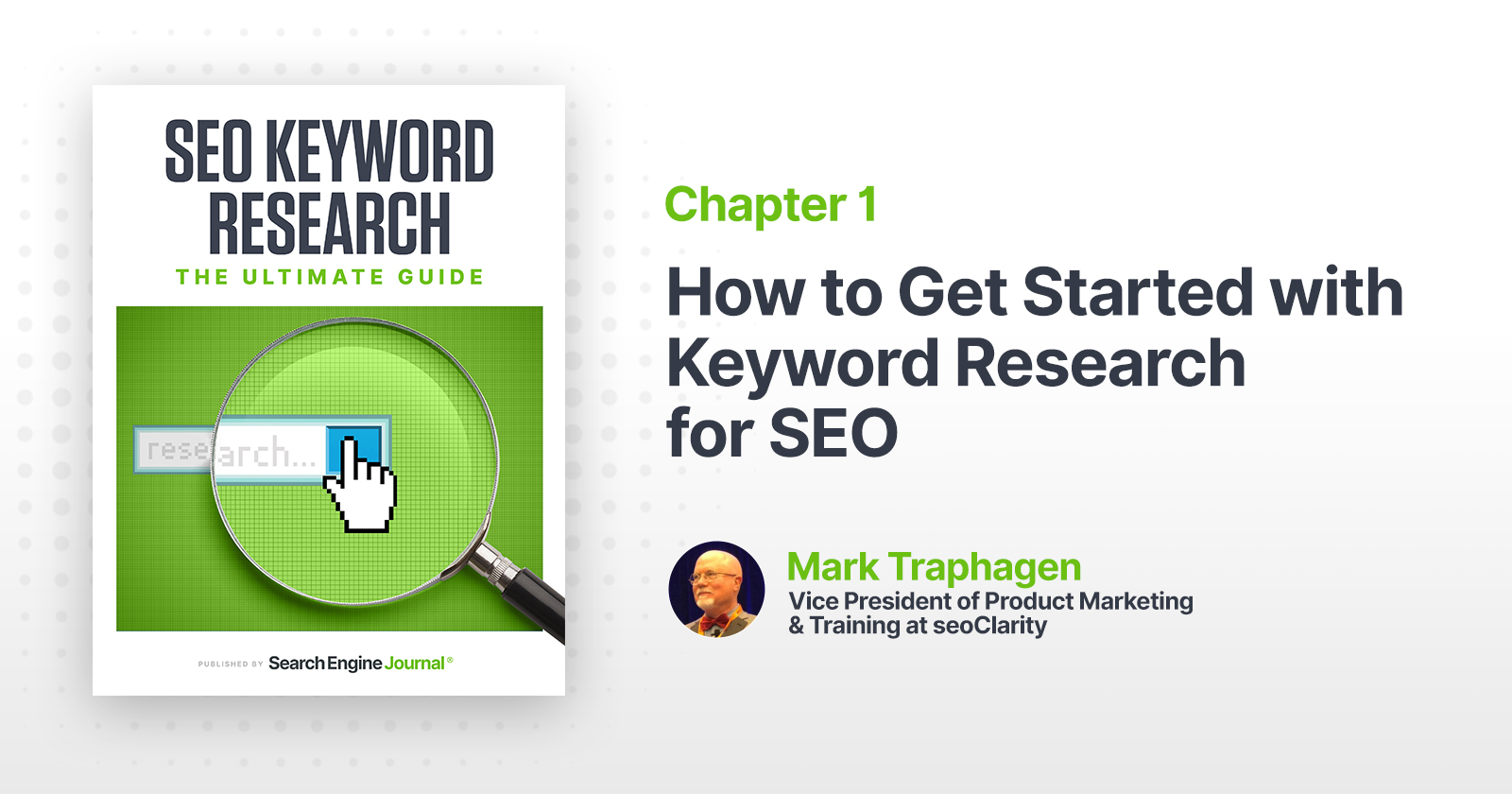Despite all the many changes to SEO practice over the years, keyword research remains one of the most fundamental SEO tasks.
Some form of keyword research is still one of the first things SEO professionals at all skill levels do – especially for a new site (or for any site for which they want to improve or expand search rankings).
So learning to do good SEO keyword research and analysis is one of the most valuable skills you can build.
What is Keyword Research?
Keyword research is a process of discovering and determining the keywords that matter most for the objectives of a given website.
In other words, it’s finding not only the keywords you want to rank for but also the ones you should rank for (what people who want what you have to offer actually search for).
Properly done, keyword research also yields the topics for which you should be creating content on your site.
Competitive analysis is an area closely related to keyword research.
During your research you can uncover what your competitors are ranking for that you are not, which may lead to key insights not only for your SEO strategy but for your business as well.
This guide will get you started with everything you need to know to do keyword research to build a solid foundation for your SEO.
Why Keyword Research is Important
Keyword research enables you to understand the specific terms people are using to solve their problem – and the context behind those terms.
It is important to research keywords to dispel any misunderstandings or assumptions you may have about your users’ needs and the language they use to express them.
Keyword research informs your content optimizations every step of the way.
The Keyword Research Process
Good keyword research follows an orderly process, a set of steps that help accomplish all the goals mentioned above.
However, this is not a one-and-done process.
You will need to continually revisit these steps.
Why?
Because your market situation will change over time.
Some of the changes that can necessitate new keyword research include:
- Shifting needs or desires of your target consumers.
- New queries that hadn’t appeared before or new terms searchers are using to look for what you offer.
- New competitors entering the market.
- Changes to search engine algorithms or search features.
- And many more.
Make the keyword research process one of your regular habits for good SEO health and growth.
There are many legitimate ways to approach keyword research, but in this guide, we will follow these steps:
- Analyze current keywords.
- Formulate your goals.
- Build your keyword “wish” list.
- Assess the competitive landscape.
- Expand your keyword horizons.
- Prioritize by opportunities vs. investment.
Note: The remainder of this chapter is from the perspective of a business website trying to sell products or services to potential customers. However, the basic principles apply to non-business sites as well. Just substitute your cause or passion or interest for the products and services.
Ultimately, if you’re looking for organic search traffic, you’re still trying to “sell” something!
Step 1: Analyze Current Keywords
This is where you should begin if you already have a set of keywords you’ve been trying to rank for.
If you’re starting totally from scratch, skip to Step 2
If you’re taking over an existing site or working on a site for a while, you probably have some list of keywords in mind that you’ve been trying to rank for.
The first thing you should do is list those keywords and run an analysis to see how they’ve been performing.
To analyze larger applications you’ll probably want a paid tool.
But for a more basic site, there are many free rank tracking tools available.
If your list of keywords is relatively small, you could search for them on Google to see where they are currently ranking (although that won’t give you any ranking history).
Look at the ranking history and search volume for these keywords from your tool of choice.
Next, use Google Search Console to determine what keywords your site already ranks for (if any).
Your goal here is to establish a baseline of keyword performance.
You can use this for growing your keyword universe in the other steps below.

Use the metrics you’ve gathered on your existing keywords to separate good-performing keywords from poor-but-worthwhile ones.
These are keywords that have sufficient search volume and impressions but have lower ranking and/or click-through rates.
Put the poor-but-worthwhile keywords aside to add to the list you’ll develop in the steps below.
The new keywords you’ll discover in your keyword research become the guide for all your subsequent SEO work (at least in regards to things like content optimization and link building).
Your goal here is to establish a baseline of keyword performance that you can use for growing your keyword universe in the other steps below.
Step 2: Formulate Your Goals
You might think you’re ready to start real keyword research now.
However, without some carefully crafted goals – the specific business and brand needs you want to earn organic traffic for – it will be a futile effort.
Why does this matter?
Because those goals will give you a sense of direction in your research.
Many times keyword research will turn up keywords that you could rank for, but if they are not keywords that will attract visitors who can become the solutions to the needs stated in your goals, they won’t be worth the effort you’d put into trying to rank for them.
In my opinion, this is the most overlooked step in typical keyword research efforts.
Having goals will help improve your chances of SEO success.
Plus, you’ll save more time and effort than necessary – and avoid targeting irrelevant terms (so-called vanity keywords) or keywords with little or no return on investment (ROI).
Here are a few questions to ask when formulating your goals for keyword research:
- Who is our target audience? Who buys what we sell, and why?
- What do we sell, and what is our unique value proposition in our marketplace?
- What are the chief needs and/or desires of people who become our customers?
- What are their secondary, related needs?
- What are the things our target consumers need to know to feel confident in who they choose to buy from?
Knowing the answers to these questions can help you focus on the keywords that will really matter to your business.
Step 3: Build Your Keyword “Wish List”
This step is truly internal research.
That is, it begins in your own head (or the collective heads of your team, if you have one).
Using the answers to the questions in Step 2, combined with the experience of your business or industry, list out the keywords you think best describe what your potential customers search for when they are in various phases of their buyer journey.
- What would they search for when they are just trying to educate themselves about the kinds of things you sell?
- What would they search for when they are trying to make an informed decision about who to buy from?
- What would they search for when they want to buy specific things you sell?
The purpose of these brainstormed lists is similar to the purpose of Step 2: To provide some guidance in your research in determining what matters for your business.
Don’t assume that the keywords you come up with from this exercise are all actually valuable.
Step 6 will, among other things, help you determine that.
Step 4: Assess the Competitive Landscape
One of the best sources to find keywords you should be ranking for but aren’t yet is your competitors.
If they’ve been in the game longer than you, they have probably uncovered and capitalized on many more opportunities, whether they found them by careful research or just stumbled upon them.
Many SEO tools will show you the top-ranking keywords for a given domain, but you may need to invest in one of the paid tools to delve deeper.
Let’s look at some different ways of approaching competitive keyword research.
Using Google
We’ll start with the simplest free method of competitive keyword discovery: Google itself.
This method can uncover a lot of opportunities, but since it is dependent on a certain amount of guesswork on your part, it isn’t going to give the full picture.
Nevertheless, it can be a good way to start if you don’t have good tools handy.
Google is most helpful in identifying who your top online competitors are.
Keep in mind these may not be the same in every case as your “real world” competition (if you and others are selling your wares through brick and mortar stores, for example).
Start by searching for the products or services you sell, and see who comes up in the top few results consistently.
For example, let’s say one of your products is garage door openers:

Skipping past the paid ads, it’s evident that Home Depot and Lowes are your top organic search competition for this product.
If you sell multiple products or services and these two show up again and again in searches, add them to a list of top competitors.
Be sure to also search any alternative names searchers might use for your products or services.
Next, do a Google site search for each product and its alternative names for each competitor domain.
To do this, enter into Google the search term and then site:domainname.com (using the domain of the competitor).

This search tells us the alternative keywords that the competitor ranks for in Google for this product.
In the example above, we see that Google might show Home Depot’s garage door opener products to people searching for belt-drive garage door openers, chain-drive garage door openers, and 4-garage door openers. Add all of these to your keyword list.
Using Keyword Tools
For more sophisticated competitive research, you’ll need a third-party tool.
Some of the free tools can provide you with limited access to this intelligence, whereas almost all of the paid tools can show you a much more complete competitive picture.
Many tools allow you to input a competitor’s domain to discover the keywords they rank highest for.
Here’s how that looks in seoClarity, for example. (Disclaimer: I work for seoClarity, but most of the paid keyword tools will give you similar output.)

Add any relevant keywords and variations to your list.
With these tools, you usually can dig to another level where you can discover:
- Keywords both you and a competitor rank for (if you rank lower, what would it take to boost you above them?).
- Keywords where they rank, but you don’t (time to create or improve some pages to get in that game!).
Step 5: Expand Your Keyword Horizons
While keywords are still foundational to good SEO, optimizing for them alone will only get you so far.
Over the years, Google has vastly improved its ability to recognize topics and all their related terms, so now every keyword is really the gateway to a topical universe.
There are a number of free tools designed specifically for suggesting related topics for any given keyword.
Some of the most popular include:
- Answer the Public.
- Keyword Explorer.
- Keywords Everywhere.
- Find more in this list of tools here on Search Engine Journal.
Most of these tools work by scraping Google SERPs (and sometimes the sites that rank highest there) to discover the search terms and questions searchers use most frequently for a given topic or keyword.
As always, some paid tools will give you more depth, including terms semantically related to your keywords.
As a final step, look through your now-expanded keyword list to pick out the high-level topics, then group the remaining keywords under these according to relevance.
You can use this organized list later to guide you in building out interlinked content that will give you broader topical relevancy with search engines.
Step 6: Prioritize by Opportunities vs. Investment
This final step is not really research per se, but it is a critical bridge to converting what you discovered in your research into actions that lead to results.
In this process, your first priority should be the best opportunities, but these always must be weighed against the cost of winning those opportunities.
In other words, a particular keyword may have a high traffic potential, but if you will have to spend too much time trying to win a good rank for it or you won’t be able to convert that traffic into one of your business goals, then it isn’t worth the cost.
Gather the Metrics & Sort
Put all the keywords you’ve accumulated into a spreadsheet and create columns for key indicators of value and cost, such as:
- Average search volume.
- Impressions.
- Clicks.
- CPC bid price.
Even though CPC isn’t an organic search metric, it can serve as a good indicator of how competitive the keyword is.
The higher the CPC, the more competitive it is, and the more difficult it may be to win a good organic position for it.
Another metric you may want to look at is trends.
- How has this keyword performed over time?
- Is it growing in search volume?
- Has its CPC risen or fallen?
If you don’t have a tool that tracks such trends, Google Trends can at least give you an idea of search interest in a topic over time, though you won’t find every keyword there.
Don’t just prioritize by these metrics, however. Go back to the goals you formulated in Step 2.
Which keywords are most likely to contribute at each step in a buyer’s journey to you accomplishing your business goals?
Match up with Your Existing Content
Decide which keywords from your list relate to content you already have.
Looking at what ranks in the SERPs for a keyword, determine its primary search intent as Google sees it. Is it:
- Transactional (something people enter when they are looking to buy)?
- Informational (something people enter when they want to learn more)?
- Local (something people enter when they want to find a nearby store or facility)?
- Navigational (something people enter when they know exactly what they want and who they want to get it from)?
Now evaluate whether each piece of content is well-optimized for the keyword(s) you mapped to it and if that content also fits the search intent of the keyword.
If it doesn’t, then plan to either improve that piece of content or build something new to do the job better.
Start Your Keyword Flywheel
Keyword research is a process that should never end.
Fluctuations in the marketplace, new competitors, changes to Google, changes in your business, all of these, and more can necessitate further research and prioritization of keywords.
Ongoing keyword research is one of the best ways never to lose your competitive edge.
Build the muscle now, exercise it regularly, and it will keep building your benefits year after year.
Featured image credit: Paulo Bobita





